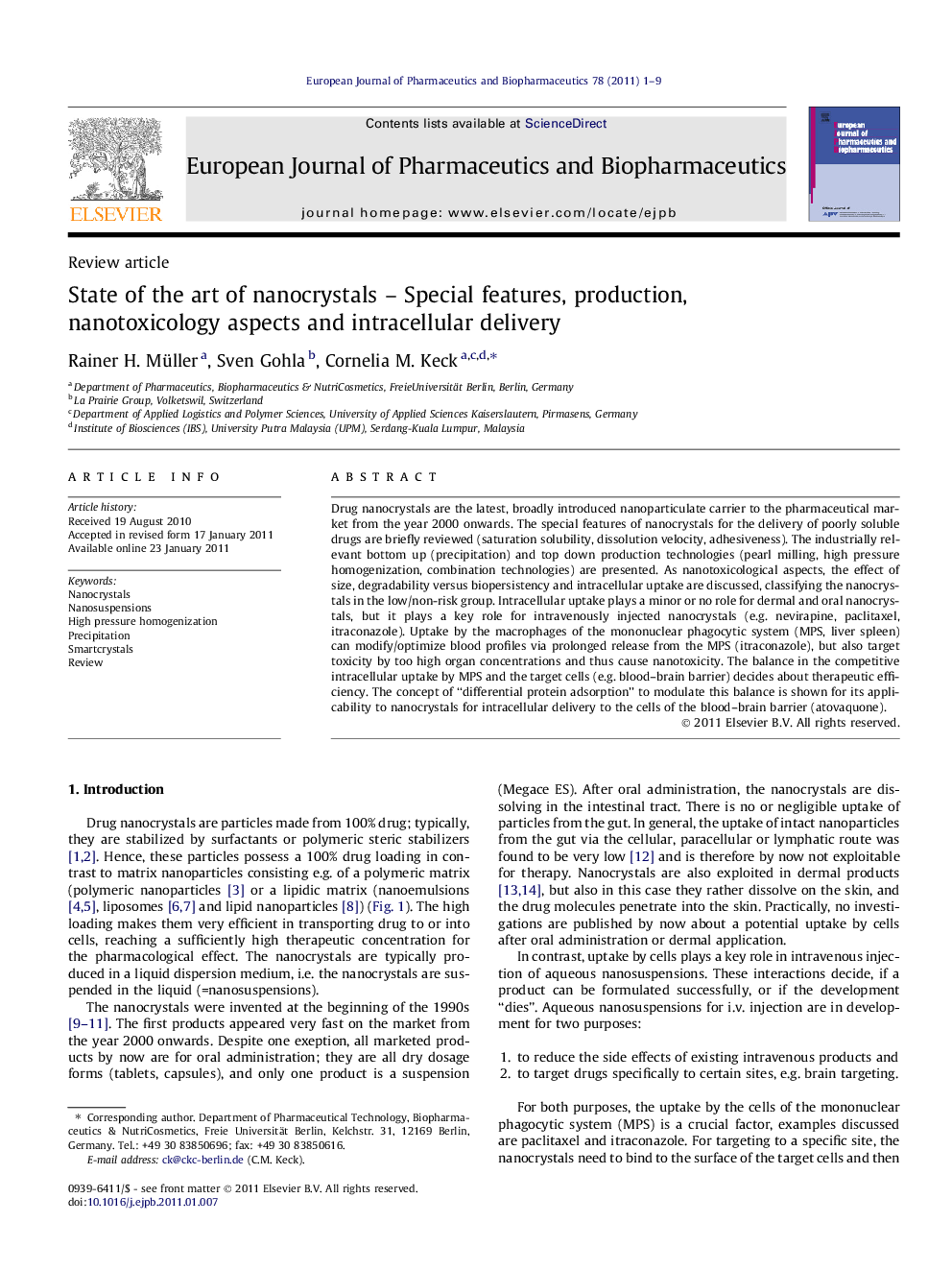| Article ID | Journal | Published Year | Pages | File Type |
|---|---|---|---|---|
| 2084179 | European Journal of Pharmaceutics and Biopharmaceutics | 2011 | 9 Pages |
Drug nanocrystals are the latest, broadly introduced nanoparticulate carrier to the pharmaceutical market from the year 2000 onwards. The special features of nanocrystals for the delivery of poorly soluble drugs are briefly reviewed (saturation solubility, dissolution velocity, adhesiveness). The industrially relevant bottom up (precipitation) and top down production technologies (pearl milling, high pressure homogenization, combination technologies) are presented. As nanotoxicological aspects, the effect of size, degradability versus biopersistency and intracellular uptake are discussed, classifying the nanocrystals in the low/non-risk group. Intracellular uptake plays a minor or no role for dermal and oral nanocrystals, but it plays a key role for intravenously injected nanocrystals (e.g. nevirapine, paclitaxel, itraconazole). Uptake by the macrophages of the mononuclear phagocytic system (MPS, liver spleen) can modify/optimize blood profiles via prolonged release from the MPS (itraconazole), but also target toxicity by too high organ concentrations and thus cause nanotoxicity. The balance in the competitive intracellular uptake by MPS and the target cells (e.g. blood–brain barrier) decides about therapeutic efficiency. The concept of “differential protein adsorption” to modulate this balance is shown for its applicability to nanocrystals for intracellular delivery to the cells of the blood–brain barrier (atovaquone).
Graphical abstractA review about the state of the art of drug nanocrystals about 20 years after their invention; covering their special features, production methods, as well as nanotoxicology aspects (including a suggestion of a Nanotoxicological Classification System); intracellular delivery.Figure optionsDownload full-size imageDownload as PowerPoint slide
